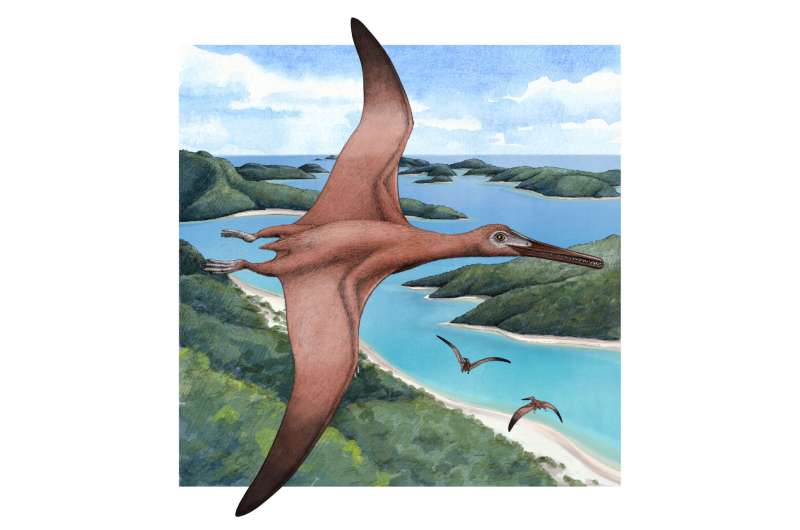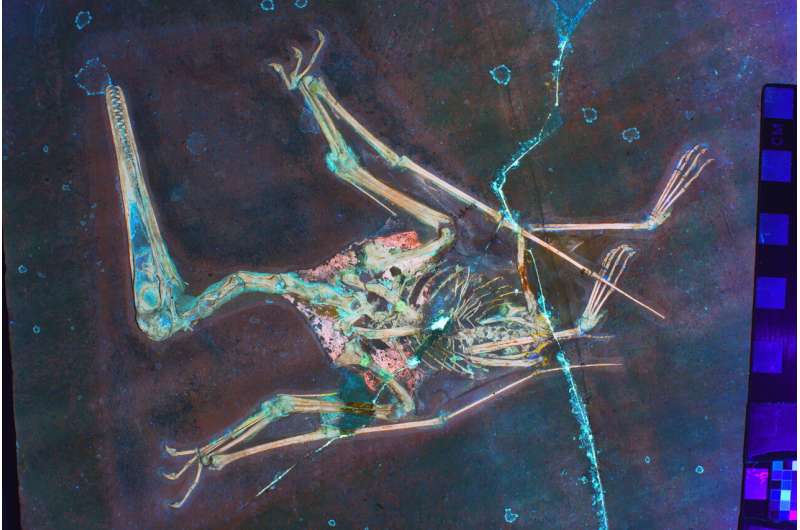October 19, 2021 report
Using laser-stimulated fluorescence to learn more about how pterosaurs flew

A small international team of researchers has used laser-stimulated fluorescence to learn more about how pterosaurs flew. In their paper published in Proceedings of the National Academy of Sciences, the group describes their study of the ancient flying reptiles aimed at learning more about their flight mechanics.
Pterosaurs were a type of flying reptile that lived during the Cretaceous and Jurassic periods (over the course of 160 million years). Prior research has shown their wings were made of membranes and evolved from a greatly elongated fourth finger. Pterosaurs are believed to be the first vertebrates to take flight, though there are still gaps in the understanding of their flight mechanics. Their numbers were in decline prior to the asteroid impact that wiped them out completely (along with the dinosaurs) approximately 66 million years ago. In this new effort, the researchers sought to learn more about the physical properties of the reptiles that allowed them to fly.
The work by the researchers involved applying laser-stimulated fluorescence to pterosaur fossils found in a southern part of Germany. They used a blue laser along with long-exposure photography to create fluorescent images of the soft tissue that the researchers believed was involved in flight.

In studying the images they created, the researchers found evidence of a wing root fairing that served to smooth the air flowing in the vicinity of the junction of the wings to the body. Fairings are coverings that are used by modern birds and bats (made of feathers or fur) and aircraft engineers (metal). Their purpose is to prevent air turbulence by allowing the air moving over certain parts of a creature or plane to flow smoothly, thus making flight more efficient. In the case of the pterosaurs, the fairings appeared to smooth out the bony front part of the wing as it met the body. And in contrast to modern birds and bats, the fairings appeared to have been made of muscle. The researchers suggest that such a feature likely gave the flying reptiles a very high degree of wing power and flight control.
More information: Michael Pittman et al, Pterosaurs evolved a muscular wing–body junction providing multifaceted flight performance benefits: Advanced aerodynamic smoothing, sophisticated wing root control, and wing force generation, Proceedings of the National Academy of Sciences (2021). DOI: 10.1073/pnas.2107631118
Journal information: Proceedings of the National Academy of Sciences
© 2021 Science X Network





















